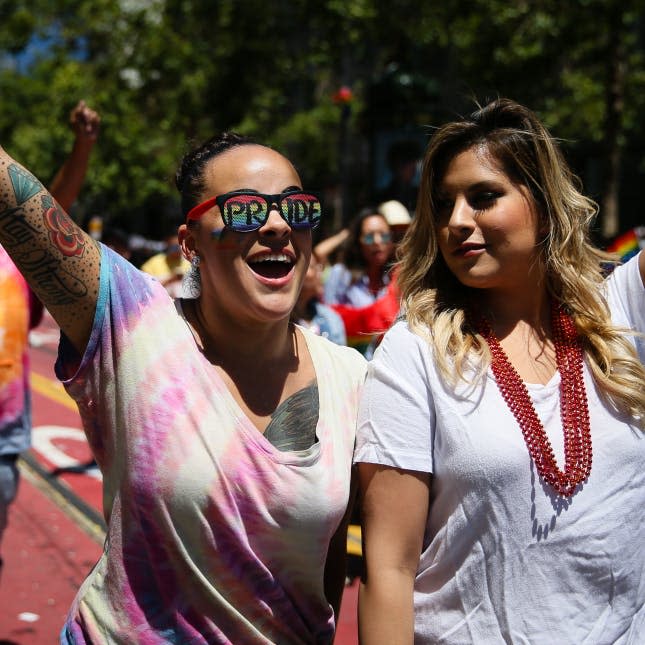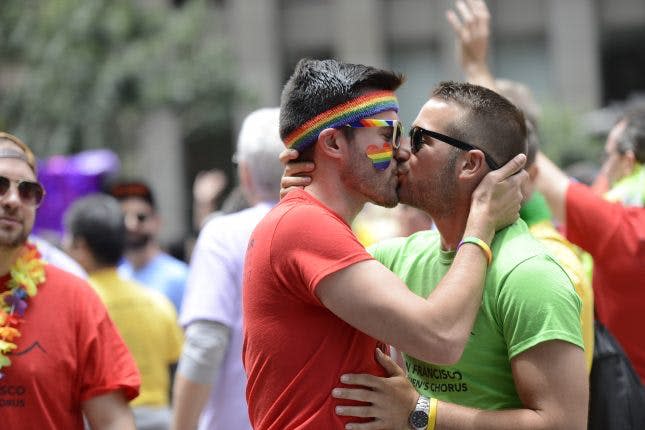Pride Isn’t Just a Celebration: It’s a Protest
Public perception of Pride is that it’s a big party. It’s hard to contest this when the dominant representation of Pride is masculine, muscular, cisgender white men dancing in Speedos and drinking lots of alcohol. However, it’s important for people, particularly those outside of the queer community, to know that Pride is, first and foremost, a protest. The fact that it’s a loud and shameless party is, in many ways, is a protest on its own. However, the celebratory focus of Pride often lacks the awareness and action required to take its activism beyond a one- or two-day event. And the need for activism is critical; many of us in the community, whether Black, low-income trans women, or undocumented, Latinx, gay men, or lesbians with disabilities, still have our rights and liberties challenged on a daily basis.

That truth can be uncomfortable for people. In our hyper-competitive, partisan society, asking for empathy and support, or declaring injustices and sharing truths, can be dangerous acts for marginalized people. Perhaps it’s just easier for some to think that problems don’t exist if they don’t acknowledge them.
This seems very much the case with Pride. For those outside of the queer community — “queer” being a reclaimed, broader term for anything other than straight — it may not be common knowledge that trans women of color were the pioneers of the LGBTQ+ rights movement. It was these brave women who stood up to violent police officers who harassed queer people in their bars, their safe spaces in a world that hated them and even attributed entire deadly diseases like HIV/AIDS to them alone.
The cops serve the ideology of whatever society demands, and in the late ‘60s it demanded that queer people be humiliated and punished. The movement toward queer rights and acceptance didn’t happen overnight. Through abuse after abuse after abuse, trans women and other non-binary people like Marsha P. Johnson (the subject of a recent Netflix documentary), Sylvia Rivera, Andorra Marks, Bebe Scarpi, Bubbles Rose Marie, Bambi L’Amour, and Miss Pixie, physically fought back and declared that they weren’t going to take it anymore and that they deserved the same rights as everyone else. (That’s the CliffsNotes version.)
Pride festivities these days rarely use their powerful platforms to honor these women who fought so bravely for the rights of a worldwide community. They didn’t erase discrimination or violence, but they started something huge. Pride, in my view, seems instead to risk promoting a false belief that we’ve “won” or that we’ve “made it” because of victories like gay marriage. This is not only a slap in the face but an incredible disservice to so many in the LGBTQ+ community who are still harassed in public bathrooms, fired from their jobs, and murdered for their gender and/or sexuality.
Admitting that we’re not where we want to be doesn’t mean we can’t celebrate. Similarly, looking at Pride as a protest doesn’t mean there can’t be parties and fun. The two aren’t mutually exclusive, but they’re sometimes painted as such within the community. But when truth and reflection are seen as the opposite of fun, things get messy.
Marginalized folks, more than anyone else, deserve to have a good time. But we only hurt ourselves when we continue, year after year, to let our own rich history slip between our fingers.
The first Pride event traces its roots to riots at the Stonewall Inn. I wonder how many queer people today can talk about the women behind Stonewall, beyond their names and quick facts. The answer, I fear, would shock and horrify many of us, especially those of us for whom this monumental battle is not so far removed.
Holidays and significant social celebrations often hinge on remembering and/or honoring some event or ideology, as Pride should. Thanksgiving, for example, is preached as a holiday of gratitude based on historically incorrect stories of peaceful pilgrims and Native Americans. For Mother’s Day and Father’s Day, we honor figures, blood-related and otherwise, who have played significant parental roles in our lives. People remember painful events like 9/11. They, however, aren’t seen as digging up the past or not letting things go.

I worry that the denial of Pride’s political roots means that people want to forget — or erase — queer history. When you rewrite history you have the power to change the future, and not necessarily for the better.
Pride today, purposefully or otherwise, centers white, cisgender gay men as leaders of the LGBTQ+ community. Few Pride celebrations prioritize queer history and the lives and stories of trans women, particularly those of color. The trans women that Pride does celebrate are often celebrities or individuals who aren’t too vocal or politically active about trans liberation.
There are many simple ways to make Pride more historically and politically conscious without ruining the party: Give budgets to trans women and let them lead; keep cops out of Pride (for this simple reason); put reflections of our true history on the mainstage; invite more trans celebrities and performers; provide gender-neutral restrooms; host more trans-specific events; and resist greedy corporate sponsors and offer only goods and services for donation to queer causes.
Rubén Angel, a socio-cultural critic, writer, and co-host of the podcast Brown Bitter Femmes, spoke to Bustle about how Pride can be more inclusive: “We can improve our Pride month if we do away with the term ‘inclusive’ altogether, and instead focus on ‘centering’ marginalized people — specifically QTPOC [queer trans people of color], and especially those that are disabled, undocumented, sex workers, working class, and/or survivors. To be ‘inclusive’ implies that a space wasn’t made with marginalized people in mind, but are instead an afterthought. Centering QTPOC would entail that we ensure our Pride celebrations are specifically created with the purpose of uplifting these marginalized communities.”
Pride needs to use its month, its parades, and its parties in meaningful ways that can bring the queer community together; it currently can resemble the table chart from Mean Girls, wherein sexualities and genders, and sub-groups within the two, are separated from one another. Part of that means being honest about our history, and paying it tribute.
Queer people have an entire month to tell their history to the world. If we continue to use that month exclusively for parties and hype over RuPaul’s Drag Race, we may very well see history being twisted and used against all of us.
(Photos by Meera Fox + Elijah Nouvelage + Tibrina Hobson/Getty Images)


